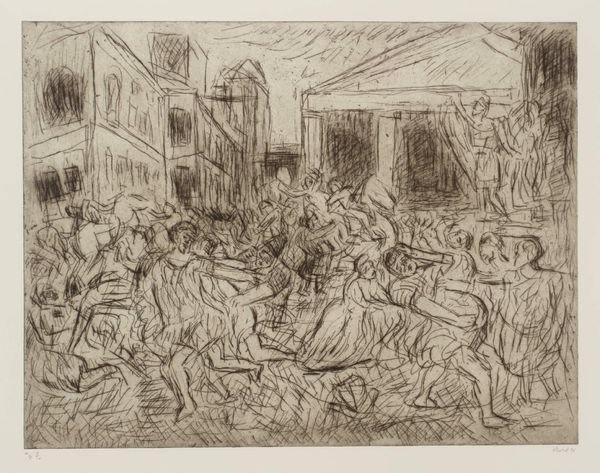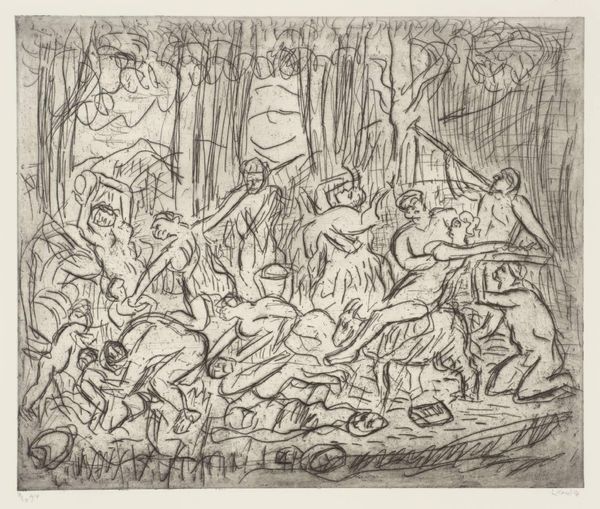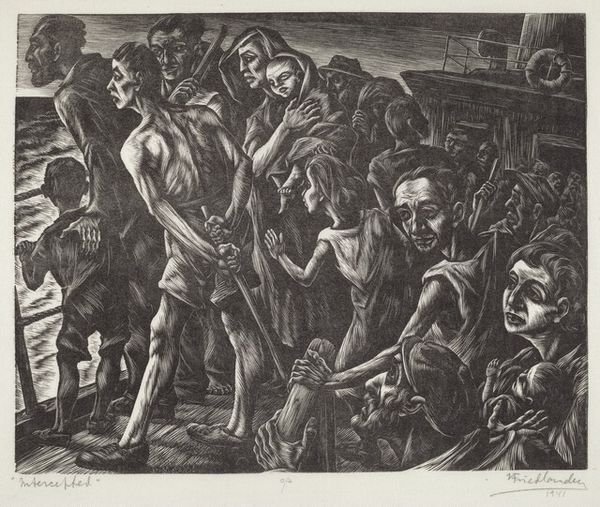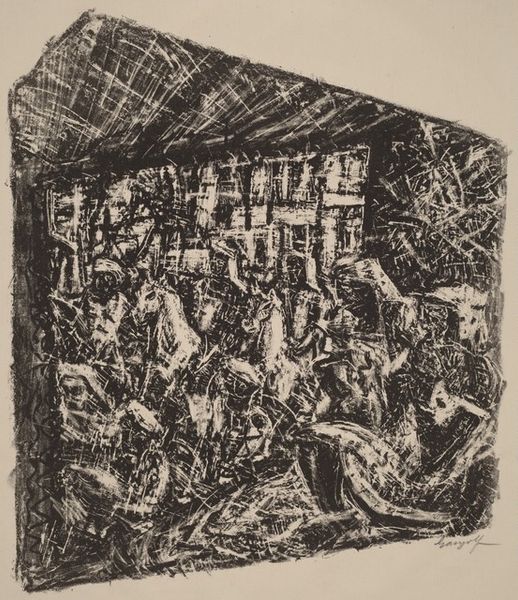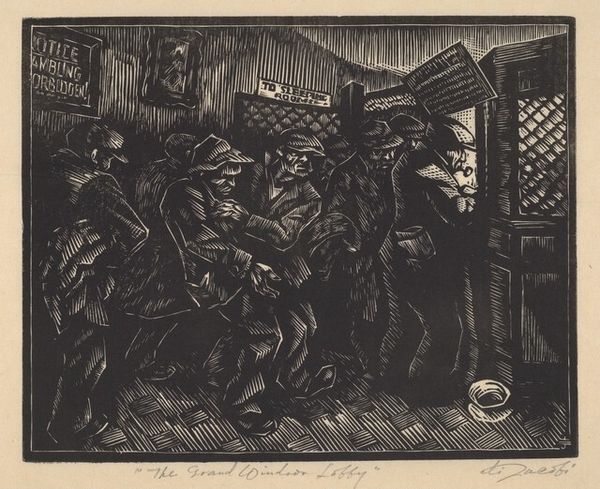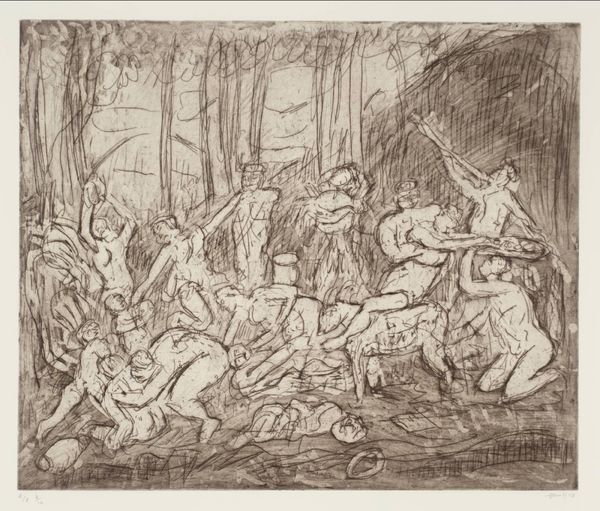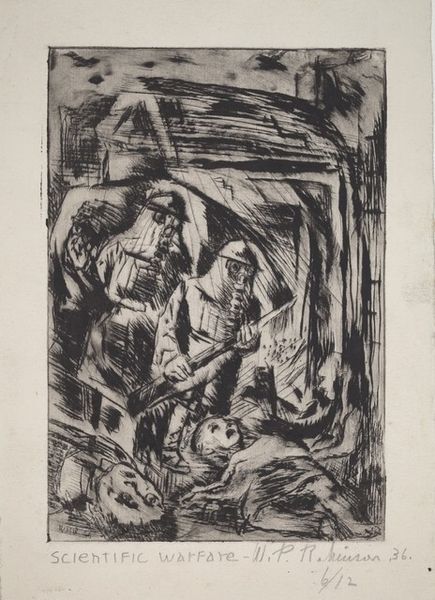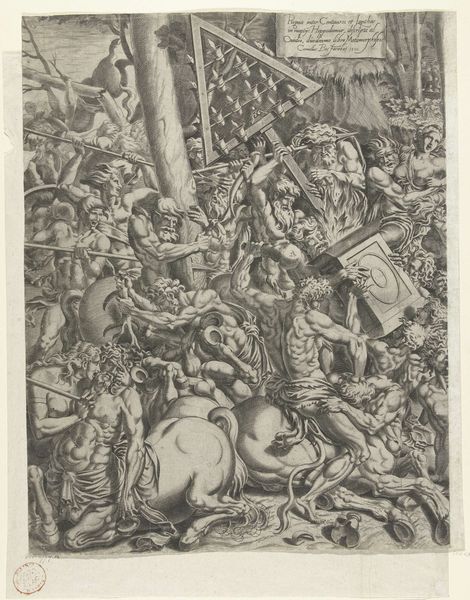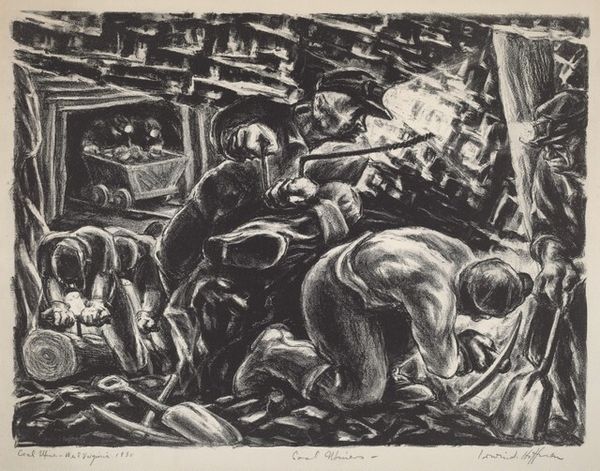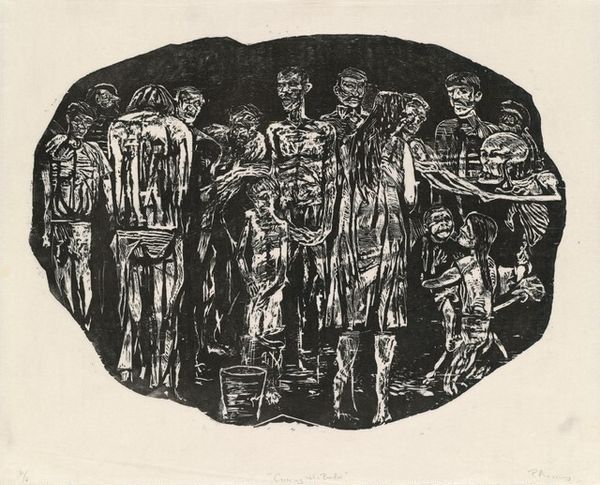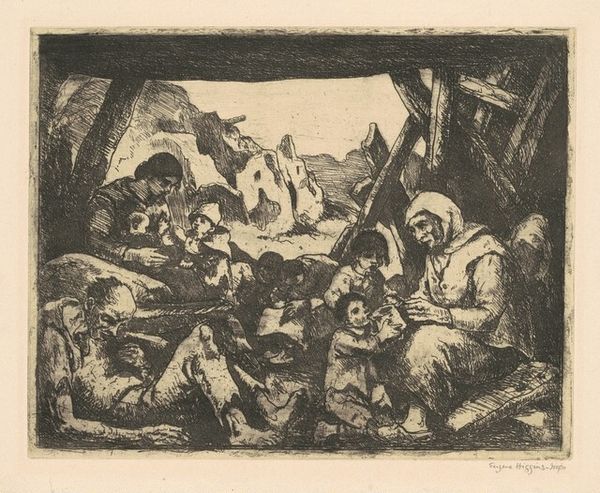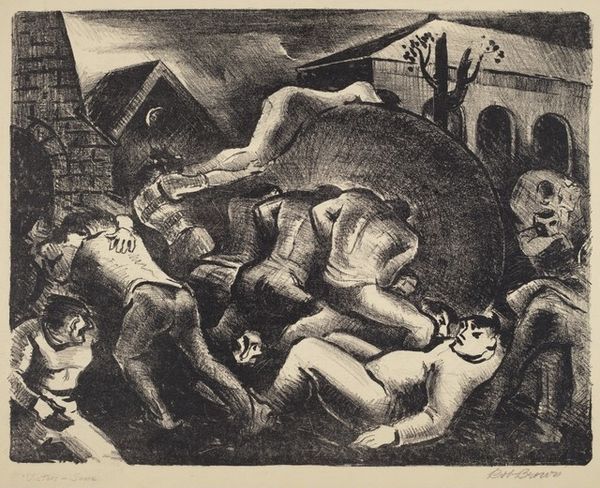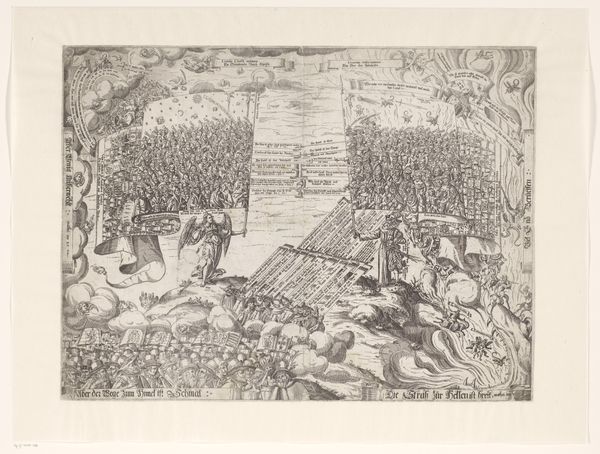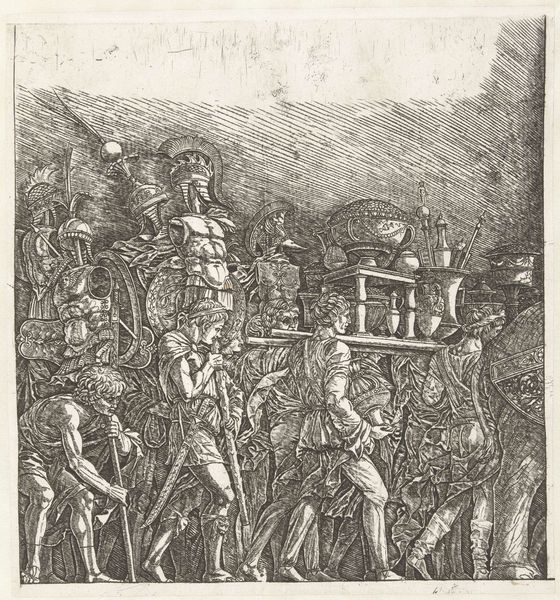
Copyright: © Leon Kossoff | CC-BY-NC-ND 4.0 DEED, Photo: Tate
Editor: This is Leon Kossoff's "The Rape of the Sabines (2)." The frantic lines and tangled figures make it feel really chaotic. What's your take on its historical context, especially given the title? Curator: Kossoff's work invites us to consider how historical narratives are constantly re-interpreted. This isn’t a straightforward illustration of the Roman myth. How does the abstraction and roughness of Kossoff's style affect your understanding of violence and power in historical depictions? Editor: I guess it makes it feel more immediate, less like a romanticized story. More like…a raw, real struggle? Curator: Precisely. It's a modern lens on an ancient tale, revealing the ongoing complexities of gender, power, and conflict as viewed through a contemporary sensibility and its relation to museum culture. Editor: It’s amazing how much history and social commentary can be packed into what at first seems like just a messy drawing. Curator: Indeed, this piece reflects how art institutions shape and are shaped by socio-political forces.
Comments
tate 6 months ago
⋮
http://www.tate.org.uk/art/artworks/kossoff-the-rape-of-the-sabines-2-p11726
Join the conversation
Join millions of artists and users on Artera today and experience the ultimate creative platform.
tate 6 months ago
⋮
This print is one of many etchings executed by Leon Kossoff in response to, and literally in the presence of, oil paintings by old masters; in this case The Rape of the Sabines, 1637, by Nicolas Poussin (1594-1665), owned by the Metropolitan Museum of Art, New York. Tate owns two prints by Kossoff after this Poussin painting (Tate P11725-6). The artist’s ability to explore a number of separate responses while making drawings and prints from a single subject is illustrated in these etchings. This print was published in an edition of twenty with ten artist’s proofs; Tate owns number three of the artist’s proofs.
